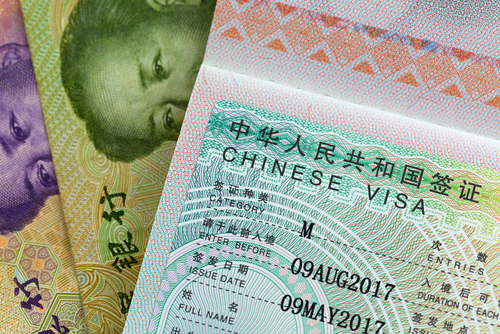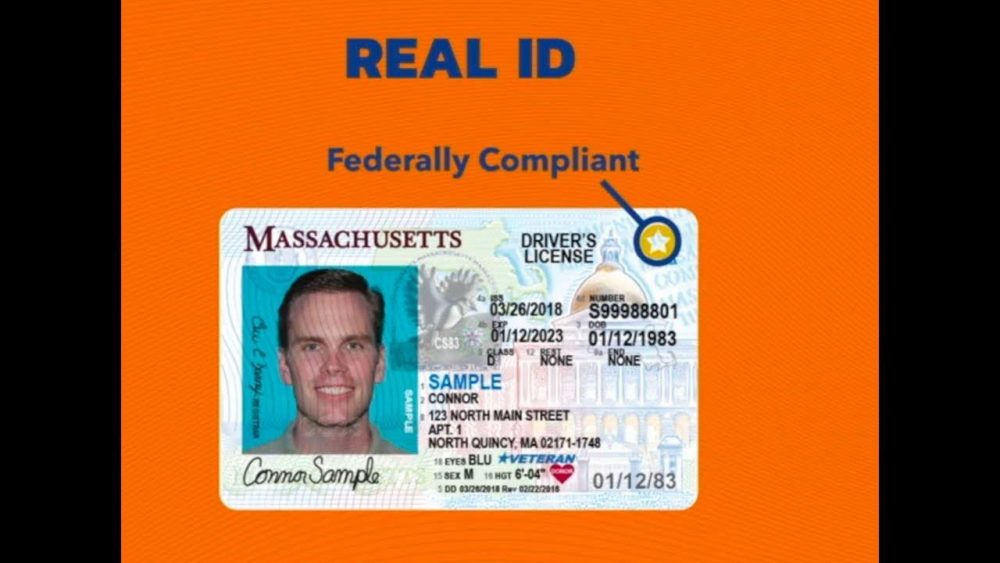Everyone loves to travel, and there will always be specific requirements before entering another country. In all cases, you need a passport, and in most, you will need a visa. With a few exceptions, some of the most popular tourist destinations around the world require a visa to enter their country. For US citizens countries such as Brazil, France, and Italy don’t need a visa, but there are many more of the most popular tourist destinations that do require one.
Australia
 After the 2000 Sydney Olympics, Australia turned into a major tourist destination for US citizens. Despite the influx of tourists from the US, Australia kept the visa requirement for safety and revenue, since visas are a great way to boost the economy. To get a visa for Australia, you will need to apply for a visitor visa by filling out ‘Form 1419 Application for a Visitor Visa’. The application can also be filled out online by applying for an eVisa.
After the 2000 Sydney Olympics, Australia turned into a major tourist destination for US citizens. Despite the influx of tourists from the US, Australia kept the visa requirement for safety and revenue, since visas are a great way to boost the economy. To get a visa for Australia, you will need to apply for a visitor visa by filling out ‘Form 1419 Application for a Visitor Visa’. The application can also be filled out online by applying for an eVisa.
Upon arrival, make sure you have a physical copy of your visa even if it was sent to you by email. Having multiple copies is also useful for identification if authorities stop you on Australian soil. Your passport must have at least 90 days of validity before arrival and should have at least one blank page for stamping. In addition to needing a visa, you may also need proof that you are HIV negative depending on how long you plan to stay in Australia. If you are HIV positive, you may be denied entry or have to be placed in the Australian healthcare system during the duration of your stay.
India
 With India’s growing economy that has millions of young people looking to make a name for themselves, it’s no surprise that one of the industries that are growing exponentially in India is tourism. Filled with great food and rich history, India is just the place that would attract a US citizen to visit at least once in their lifetime. With so many people come a few obstacles when traveling to India. India requires that everyone that enters India must have both an entry and an exit visa before landing. You will need to contact your nearest Indian embassy or consulate depending on what visa you want or need. Since India outsources their visa services to Cox and King Global Services, you will need to go through them to get your visa, even as a US citizen. Make sure your passport is valid as well before traveling to India because you may be denied entry. Since Indian visa law changes frequently, it is essential that you check the latest information that we plan on updating as regularly as possible.
With India’s growing economy that has millions of young people looking to make a name for themselves, it’s no surprise that one of the industries that are growing exponentially in India is tourism. Filled with great food and rich history, India is just the place that would attract a US citizen to visit at least once in their lifetime. With so many people come a few obstacles when traveling to India. India requires that everyone that enters India must have both an entry and an exit visa before landing. You will need to contact your nearest Indian embassy or consulate depending on what visa you want or need. Since India outsources their visa services to Cox and King Global Services, you will need to go through them to get your visa, even as a US citizen. Make sure your passport is valid as well before traveling to India because you may be denied entry. Since Indian visa law changes frequently, it is essential that you check the latest information that we plan on updating as regularly as possible.
In addition to the requirements to travel to India, we also highly recommend that you get the following vaccines before going to India:
- Hepatitis A and B vaccine
- Typhoid vaccine
- Tetanus vaccine
- Oral polio vaccine
Russia
 Possibly as a result of political and historical tension between the US and Russia, traveling to Russia as a tourist is not as simple for US citizens as they might think. To receive a Russian visa, you will need three main things:
Possibly as a result of political and historical tension between the US and Russia, traveling to Russia as a tourist is not as simple for US citizens as they might think. To receive a Russian visa, you will need three main things:
- Completed visa application form. This must be printed out and signed with a passport size photo of the applicant glued on the application.
- Passport with at least six months of validity remaining before arrival and at least two blank pages for passport stamping. Some visa centers ask for a photocopy of the passport’s identification page, so make sure to make at least one photocopy.
- Invitation letter. Regardless of your reason for traveling to Russia, you will need an invitation letter signed by the host. This host is typically the travel agency (which must be based in Russia) through which you booked your trip through or the hotel at which you plan to stay in Russia.
Make sure that you also have your entire trip planned out before you begin. Most immigration centers will ask for your itinerary detailing your plans in Russia.
When traveling to Russia, you can only extend your stay if you need to extend your stay. This could either be for medical reasons or death in the family that requires you to stay past your given time. Make sure you notify proper authorities and your host in these situations so that there is no confusion or conflict.
Vietnam
 Over the past few years, Vietnam has become a hotspot vacation location for US travelers. Since Vietnam is encouraging tourism heavily, their visa is easy to get and can be obtained in multiple ways. Just like traveling to any other country, you need a valid passport with at least six months of validity remaining. Your visa application can be filled out on paper and sent by mail or online and sent through the online website. You can also get approval from a Vietnamese travel agency that allows you to get a visa on arrival. This is riskier as these travel companies do tend to charge very high rates. Make sure you double check all your necessities right here and cross check with other websites to get the most up to date information.
Over the past few years, Vietnam has become a hotspot vacation location for US travelers. Since Vietnam is encouraging tourism heavily, their visa is easy to get and can be obtained in multiple ways. Just like traveling to any other country, you need a valid passport with at least six months of validity remaining. Your visa application can be filled out on paper and sent by mail or online and sent through the online website. You can also get approval from a Vietnamese travel agency that allows you to get a visa on arrival. This is riskier as these travel companies do tend to charge very high rates. Make sure you double check all your necessities right here and cross check with other websites to get the most up to date information.
Japan
 With the 2020 Tokyo Olympics right around the corner, it’s no surprise that you might need a visa to Japan. When entering Japan, you will need a six-month valid passport that can last you through your entire trip to Japan. As a result of the upcoming Olympics, Japan has allowed a 90-day visa-free entry to US citizens who enter Japan for tourist or business purposes. If you enter Japan with this status, you have to leave the country and come back to get a different type of visa status. For instance, if you enter with a ‘visa-free’ status but want to start working in Japan, you will need to leave Japan, apply for a work visa then come back in with the work visa. Luckily for those traveling to Japan, you do not need any exit or onward ticket as long as you do not overstay on whatever visa or status you have.
With the 2020 Tokyo Olympics right around the corner, it’s no surprise that you might need a visa to Japan. When entering Japan, you will need a six-month valid passport that can last you through your entire trip to Japan. As a result of the upcoming Olympics, Japan has allowed a 90-day visa-free entry to US citizens who enter Japan for tourist or business purposes. If you enter Japan with this status, you have to leave the country and come back to get a different type of visa status. For instance, if you enter with a ‘visa-free’ status but want to start working in Japan, you will need to leave Japan, apply for a work visa then come back in with the work visa. Luckily for those traveling to Japan, you do not need any exit or onward ticket as long as you do not overstay on whatever visa or status you have.
Another feature that has come as a result of the 2020 Tokyo Olympics is the new eVisa. Starting in April 2020, all incoming tourists can apply for a visa online. This way of obtaining a visa has proven to be effective, both for the tourists and for the countries’ economy. People are more inclined to go to a country if it is easier to get there, and the eVisa certainly makes the process much simpler.
Turkey
 Few countries in the world have as rich a history as Turkey, making it a must-see destination for frequent travelers and wanderlusts. Despite the ease of access to getting a Turkish visa, there are still certain things you should remember while planning your trip.
Few countries in the world have as rich a history as Turkey, making it a must-see destination for frequent travelers and wanderlusts. Despite the ease of access to getting a Turkish visa, there are still certain things you should remember while planning your trip.
Below is a detailed list of how to apply for a Turkish visa and what you will need while in Turkey:
Applying by Mail or in Person
- Valid passport
- Completed application form
- Supporting documents such as proof of residence (recommended)
Applying by eVisa
- Valid passport. This passport can be presented on arrival if you are picking up your eVisa in Turkey. It is also possible to scan your identity page for the application and send online.
- Email address. If your application is approved, your visa will be sent to you by email, so make sure you have a working email.
- Payment. An eVisa can be paid for online through Paypal, credit card, or debit card.









 However, living in dorms will also have some challenges. Most often, you will be paired with at least one person when you live in a dorm. Your roomie can be from any country in the world. So, you must learn to live with a stranger and share the space and everything that comes with it.
However, living in dorms will also have some challenges. Most often, you will be paired with at least one person when you live in a dorm. Your roomie can be from any country in the world. So, you must learn to live with a stranger and share the space and everything that comes with it. You get to build a relationship you never expect to have in another living environment. Apart from the culture and language, you also get firsthand experience of places you may not seek to adventure if living in a dorm or apartment. Even speak the language.
You get to build a relationship you never expect to have in another living environment. Apart from the culture and language, you also get firsthand experience of places you may not seek to adventure if living in a dorm or apartment. Even speak the language. Apartments also offer many experiences. Most often, you will have students living in the same building or area. So, you will find yourself hanging out in the same restaurants, clubs, or at the beach.
Apartments also offer many experiences. Most often, you will have students living in the same building or area. So, you will find yourself hanging out in the same restaurants, clubs, or at the beach.
 If your choice of studying abroad is an English-speaking country, then you might be familiar with the culture. Still, do your homework. Communicating may not be the problem but understanding how things are done is essential.
If your choice of studying abroad is an English-speaking country, then you might be familiar with the culture. Still, do your homework. Communicating may not be the problem but understanding how things are done is essential. Knowing how to get around is very important. As a student, you are surely living on a budget and must make your money stretch. Look for the cheapest and safer way to get around. Some cities are best for getting around on bikes or mopeds. Use public transportation when possible. It is another inexpensive way of moving from one place to another.
Knowing how to get around is very important. As a student, you are surely living on a budget and must make your money stretch. Look for the cheapest and safer way to get around. Some cities are best for getting around on bikes or mopeds. Use public transportation when possible. It is another inexpensive way of moving from one place to another. If you can find a job, that would be perfect. Earning some money will help you to adopt more easily. You would be interacting more and getting to meet more people. Understand the culture and language. Also, you will have a chance to tour the country and see more than just the campus. Make sure you have the documentation that allows you to work. You don’t want to do anything that may jeopardize your study abroad or worse, get you into trouble with the law.
If you can find a job, that would be perfect. Earning some money will help you to adopt more easily. You would be interacting more and getting to meet more people. Understand the culture and language. Also, you will have a chance to tour the country and see more than just the campus. Make sure you have the documentation that allows you to work. You don’t want to do anything that may jeopardize your study abroad or worse, get you into trouble with the law.